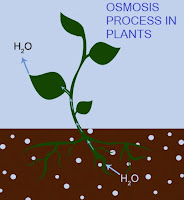A Pump is a machinery or device used to move or compress Fluids (Liquids or Gases ) or Slurries, by using mechanical action. The mechanical energy available from the the motor into potential, kinetic and thermal energy imparted to the liquid flow.
"Pump is a mechanical device, which converts the mechanical energy into pressure energy of the liquid" which is subsequently converted into potencial energy as the liquid is lifted from a lower to higher level.
"Pump is a mechanical device, which converts the mechanical energy into pressure energy of the liquid" which is subsequently converted into potencial energy as the liquid is lifted from a lower to higher level.
Pumps are widely used in industries like power plants, chemical, petrolium, paper, metallurgy etc., There are many different types of pumps and each pump have different working principle. Type of pump which you need depends upon the application. The basic requirement of any pump is it's reliability, durability and efficiency.
There are many types of pumps are the in the industry, the type pump we need depend on application, including;
1) The type of fluid
2) The volume of liquid
3) The distance/head
Classification of Pumps
Pumps are divided into two major categories:
a) Dynamic (or Kinetic)pumps
a) Dynamic pumps:
Dynamic or Kinetic pumps include all pumps that impart fluid velocity and the resulting momentum to the fluid as it moves past or through the pump impeller and subsequently convert some of that velocity into additional pressure in a diffusing flow passage.
These pumps generally have lower efficiency than positive displacement pumps. However they do operate at relatively higher speeds, thus providing higher flow rates in relation to the physical size of the pump. These pumps require less maintenace than positive displacement pumps.
Classification of Dynamic pumps:
i. Centrifugal pumps
ii. Vertical/Horizontal pumps
iii. Submersible pumps
iv. Fire fighter pumps
v.
 |
Image Courtesy : http://www.sugarprocesstech.com
|
a) Positive displacement pumps:
A positive displacement pump makes a fluid trap in a fixed amount and forcing (displacing) that trapped volume by the moving element (Piston, Plunger, Rotor, Lobe, or Gear) from the pump casing (or cylinder) into the discharge pipe, and, at the same time raises the pressure of the liquid. So displacement pump doesn't develop pressure; it only produces a flow of fluid.
Some positive displacement pumps use an expanding cavity on the suction side and a decreasing cavity on the discharge side. Liquid flows into the pump as the cavity on the suction side expands and the liquid flows out of the discharge as the cavity collapses. The volume is constant through each cycle of operation.
Classification of Positive displacement pumps:
v Diaphragm pumps
v Piston/Plunger pumps
v Screw pumps
v Lobe pumps
 |
Image Courtesy : http://www.sugarprocesstech.com
|




